December 7
I decided to take a flight from Madrid to Sevilla because the flight was almost the exact same price as the high speed train between the two cities and was 3 hours faster. It was a pretty short flight and there was a direct bus to the central area of Sevilla from the airport, which was quite convenient.
After leaving my baggage at the hostel, I went to explore Sevilla. One thing to note about Sevilla is that it is cut by the Guadalquivir river, with most of Sevilla on one side of the river and the Triana district on the other side. The Triana district is a well-known entertainment distict of Sevilla, with plenty of shops, restaurants, and when I was there, Christmas decorations. I mostly walked around the district admiring the Christmas decorations. At one point, I got swept into a large crowd who were singing Christmas carols. Southern Spain takes Christmas very seriously, so there were many carolling groups bellowing Spanish carols under the luminescent decorations. Walking all around this district got me hungry for dinner, so I stopped by Malvon, a empanada shop. I was suprised by the high quality of the empanadas in the shop; the pastry practically melted in my mouth and the fillings were delicious.
After watching the Guadalquivir river for a bit, I went back to my hostel, talked with a few of my hostel mates and went to bed.
.jpg)
.jpg)
December 8
On this morning, I decided to take a scenic walk along the Guadalquivir river towards Parque Maria Luisa. I would strongly recommend the walk, especially in the morning. The sunlight beautifully painted the Triana district and its surroundings. The park itself is nothing incredible, but it was connected to Plaza de España. This plaza was created as part of the Ibero-American Exposition of 1929 and is constructed in typical Andalusian style. What was most interesting in this plaza was that every province in Spain has a small tiling and seat created, with the tiling depicting an important historical event in the province’s history. This was really interesting to me, as I was reading up on a lot of Spanish history before I came on this trip. Plaza de España has a lot of interesting details and tilings, so definitely predict at least 45 minutes of exploring.
After my explorations, I met up with my free walking tour group. We explored large parts of Sevilla, including Sevilla’s bullfighting ring, the Giralda (a minaret-turned-bell-tower, which is very common in Andalusia) and the Alcazar. Sevilla is full of interesting history; the walking tour filled in a lot of confusing details of Sevilla’s story. Afterwards, I went into a tapas bar for a quick bite (typical Andalusian tapas of spinach + chickpeas and fried fish) and rushed back to my hostel to take a school call.
Unfortunately, because of the call, I missed out on Real Alcazar, which is one of the best preserved Moorish castles. I decided to check out the neighboring Jewish quarter of Santa Cruz. I didn’t like it as much as the other Jewish quarters I have seen in other parts of Iberia primarily because it has mostly become a tourist centre. After my explorations, I went to Triana to get more empanadas and watch the sunset on the Guadalquivir.
After spending some time at my hostel talking to a few people, I went over to a Moroccon place and got some rice plates. Fun note: Moroccan food is very common and great in Southern Spain as there are a lot of Moroccan. Afterwards, I explored the central Sevillan Christmas market. It was incredibly packed this night as it was a national Spanish holiday, so people all across Spain had descended to Sevilla due to its great weather.
After roaming around for a bit, I came back to my hostel and went out with a few hostel mates to catch a flamenco show. We slipped into a decrepit building filled with a bunch of Spaniards huddled around a small stage, which had 4 flamenco singers and dancers. For half an hour, we were mesmerized by the flamenco dancer, her steps and the chillingly beautiful music. I would strongly recommend catching a flamenco show in Sevilla, as flamenco was born in this city. This is one of my favorite experiences in Spain.
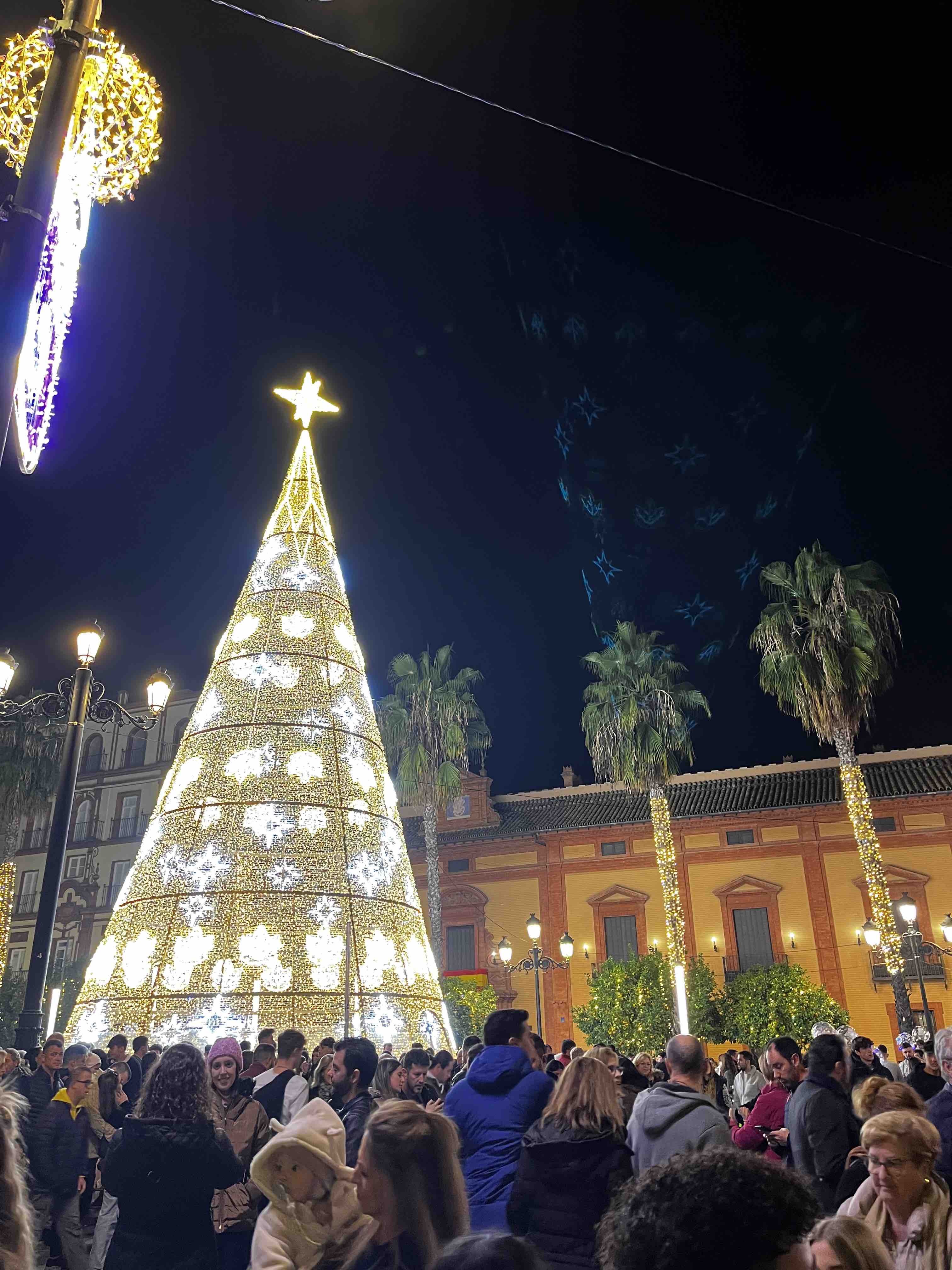



December 9
I had an early morning train to Cordoba this morning. The touristy part of Cordoba is actually quite small; it’s separated from the rest of the city with medieval walls. After walking for a bit from the train station, I finally entered the old city. I promptly made my way to the Alcazar to buy tickets, but realized that it was timed. For the hour between buying the tickets and my entry, I explored the Jewish quarter of Cordoba. One of the most famous streets in Cordoba is Callejon de Flores, which celebrates the Cordoban tradition of placing hanging flower pots on each house. I continued to roam around, found an empanada shop and ate some more empanadas near the Mosque-Cathedral of Cordoba (more on that later).
I quickly rushed to the Alcazar and explored around. I decided to ditch seeing the towers of the Alcazar since the line was extremely long and was barely moving, so I instead explored the gardens. Afterwards, I moved on to the Mosque-Cathedral. As you can probably tell from the name, the building was a former church turned mosque turned cathedral. Fortunately, the centuries of warring religions did not destroy any of the internal architecture. The famous double arches of the Mosque-Cathedral, along with the intricate Islamic details of the roof and the qibla were still apparent. I tried to listen to the audio guide included in the ticket but it was really poor quality (would not recommend buying it). Afterwards, I spent some time in the neighboring orange garden (orange trees are very common in Andalusia because they have a very sweet scent when flowering) before making my way to Granada on train.
After dropping my stuff at my Granada hostel, I went out to explore the Granada nightlife and old Christian part of the town. Like Sevilla, Granada was packed with Spaniards from all over the country. Regardless, I had a great time roaming Granada’s shops, including tea shops and spice shops remnant of the Moorish conquest times. I also got to explore the Alcaiceria, a winding section of Granada’s old town that used to be a Moorish silk market. Keeping up with the Moorish traditions, I tucked in for some more Moroccan dishes for dinner paired with some excellent mint tea. Fun fact: Granada is very well known in Spain for its tea shops; make sure to visit them and try them out if you check out Granada.



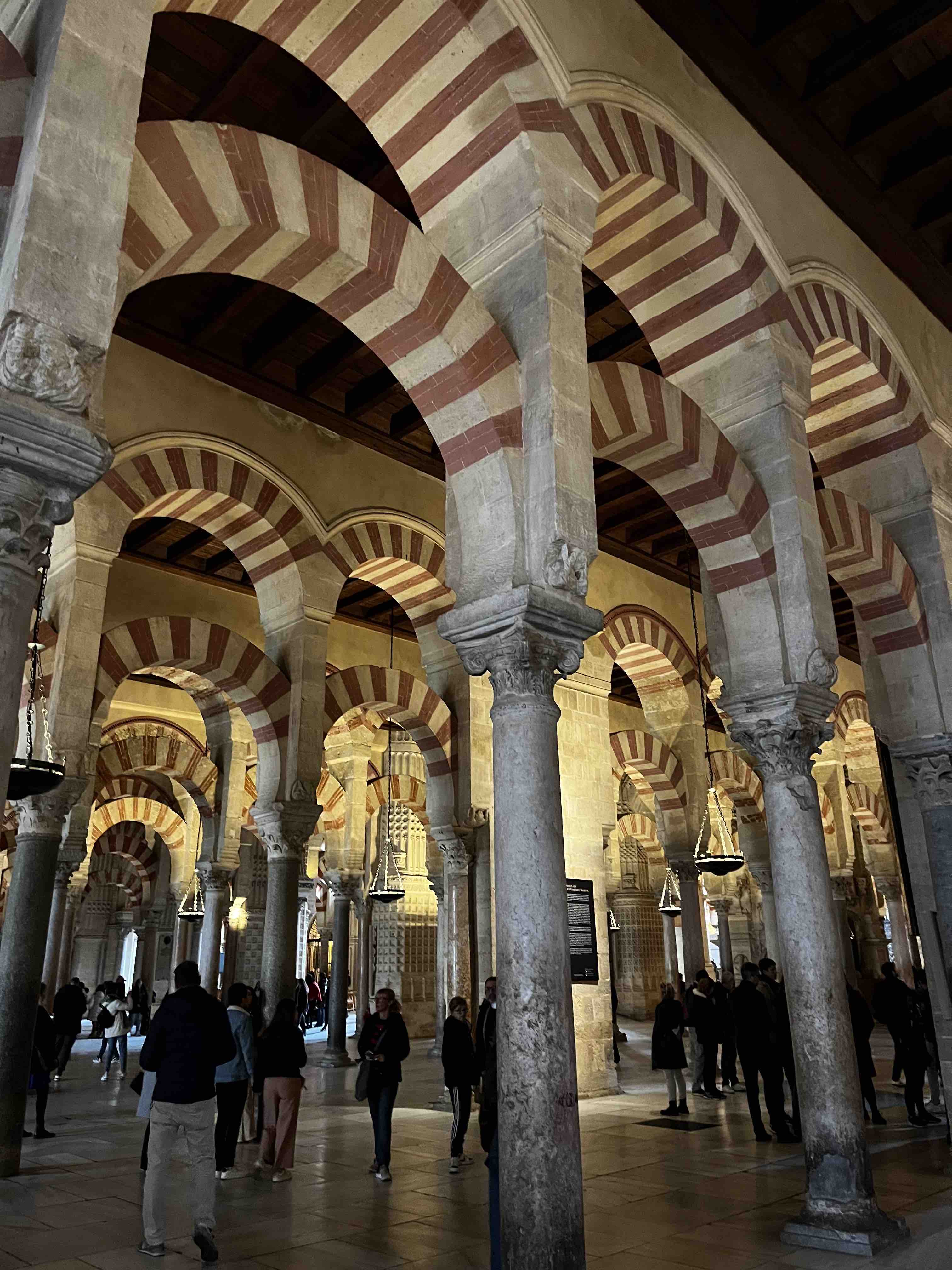


December 10
I started off the day by exploring the Albaicin. Albaicin was the old Muslim quarter of Granada, filled with white-washed houses with great views of the Alhambra. I checked out Cafe 4 Gatos, a very famous cafe and then went out to explore. I was supposed to go with a free walking tour, but the walking tour cancelled. I had to adapt and use a self-guided walking tour I found on the Internet and went on a journey. Stops included Mirador de San Nicolas, which is the most famous lookout point of the Alhambra famous for its sunset views and various churches and convents built on top of mosques or which utilized Mudejar (Muslim architecture built for Christian purposes) styles.
Afterwards, I checked out Sacromonte, which is where many of the Roma of Granada live. Interestingly, Spain does not have as much of a discriminatory attitude towards the Roma as other parts of Europe. They are well integrated and have contributed much to Spain’s culture and history, such as flamenco. After exploring the neighbored, I quickly nabbed a McDonald’s lunch and headed for the Alhambra.
Getting to the Alhambra was a bit of a trek for someone who didn’t want to use transit. There is a well known path called Cuesta del Rey Chico, which was apparently a path used by Boabidil (the last Nasrid sultan of Granada) to raise a rebellion against his father in Albaicin. This path is steep and is made of smooth river stones; it can be slippery at times. After making my way up, I checked out the Alhambra’s Alcazaba (fortress) and the Generalife (garden). These parts of the monument are not part of the timed Alhambra ticket, so you can visit it at any point on the day. We had a great time as we explored the two areas and marveled at the Islamic archiecture. Eventually, we got to explore the Nasrid palaces, which absolutely blew my mind. The amount of details and carvings in the palace made me really appreciate the craftsmanship of the past. You also would not have expected to see such detail and fragility in a palace that has such an imposing exterior looking out on the rest of Granada. After we explored the palace, we made our way up to Alcazaba to get sunset views of Granada. This was probably the best sunset views that I have gotten in Spain; the reddish color that you only get in the winter paired with the pinkish glow on the snow-capped mountains behind the Alhambra made it incredibly picturesque.
Afterwards, we headed down to the centre of Granada, checked out some silk markets and got dinner. I had traditional Andalusian croquettes and fried eggplants with honey. Andalusian tapas slaps! They also usually give out tapas foods for free with your drink, which is very uncommon in most parts of Spain.
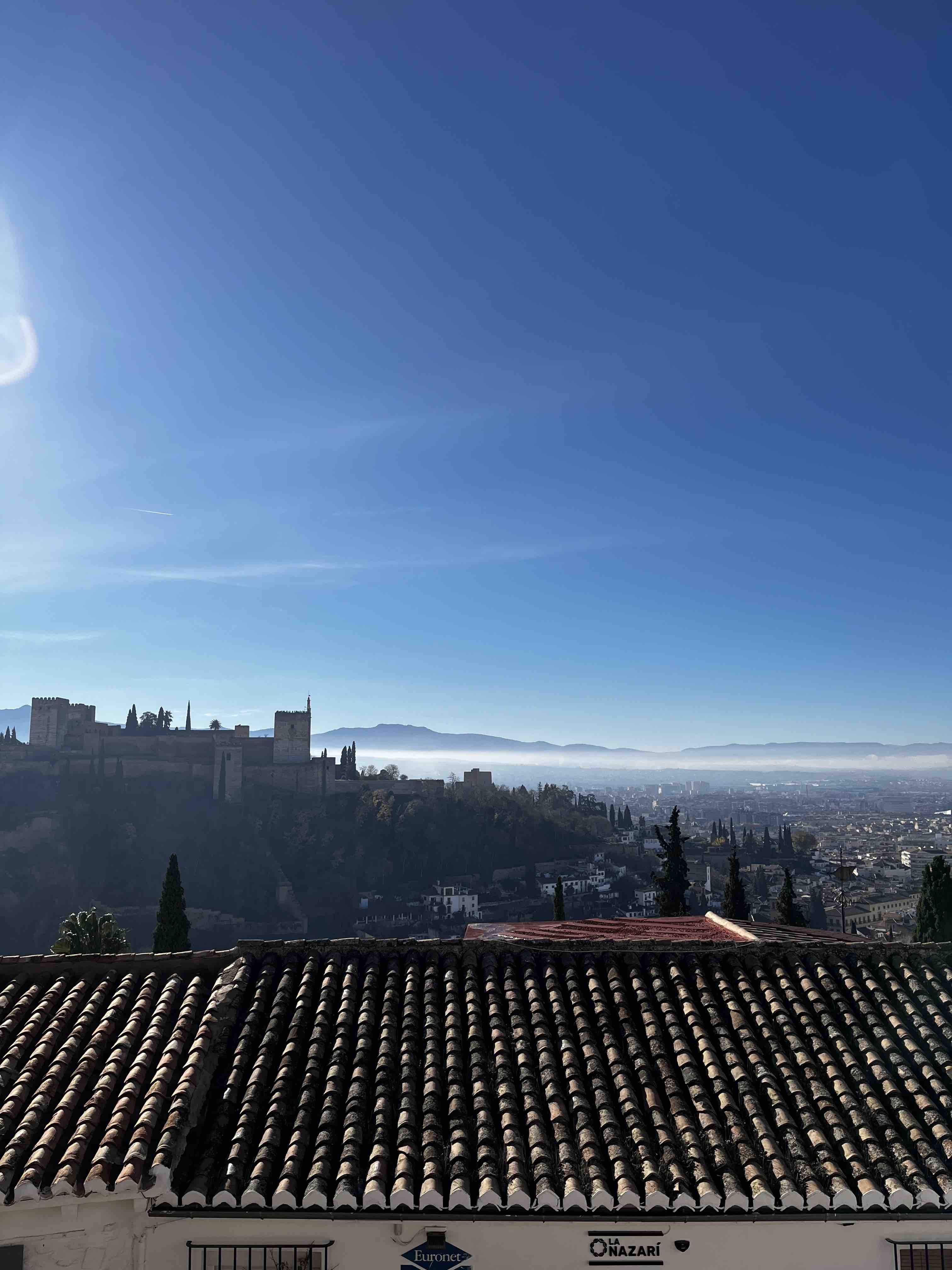






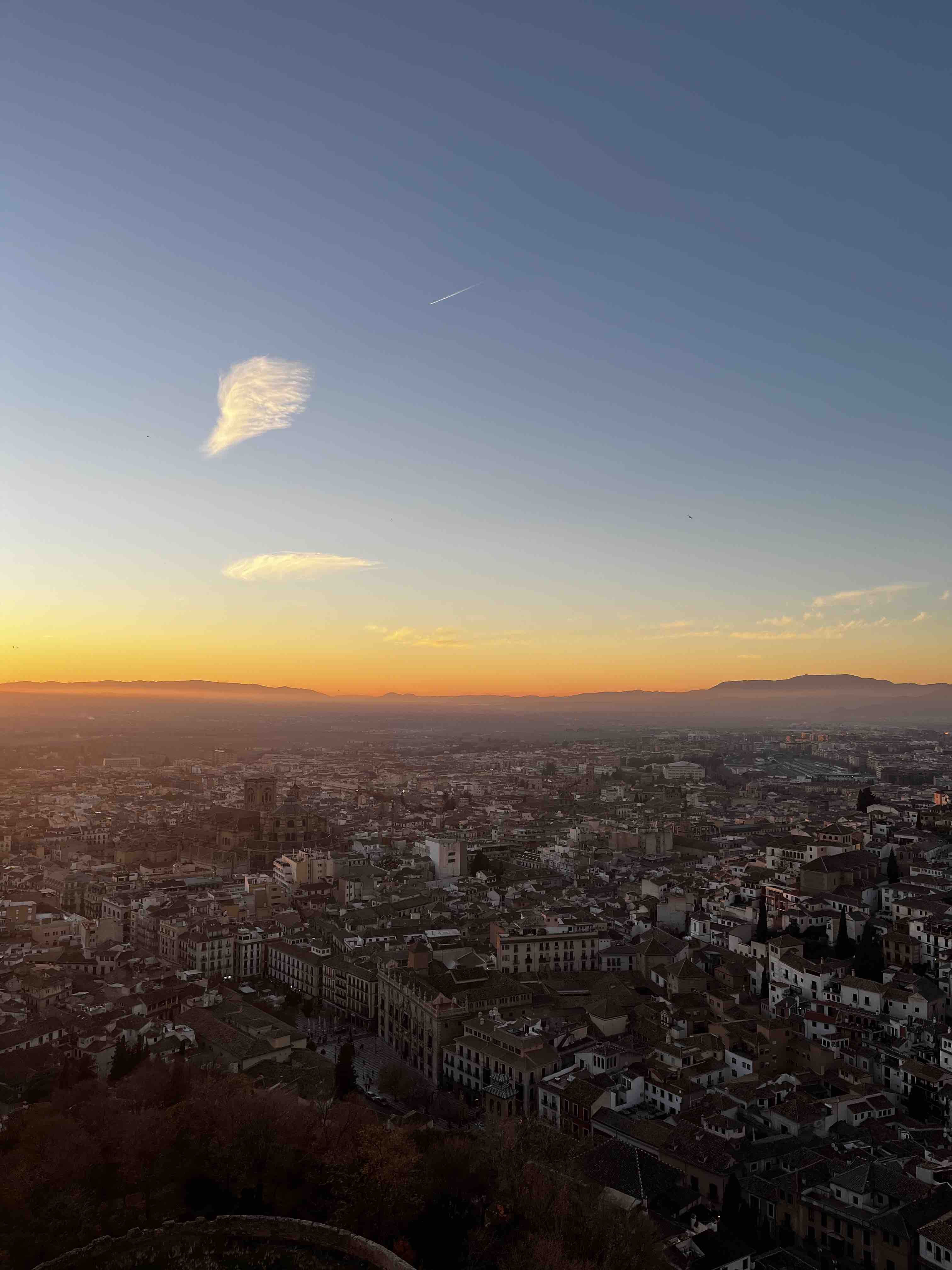
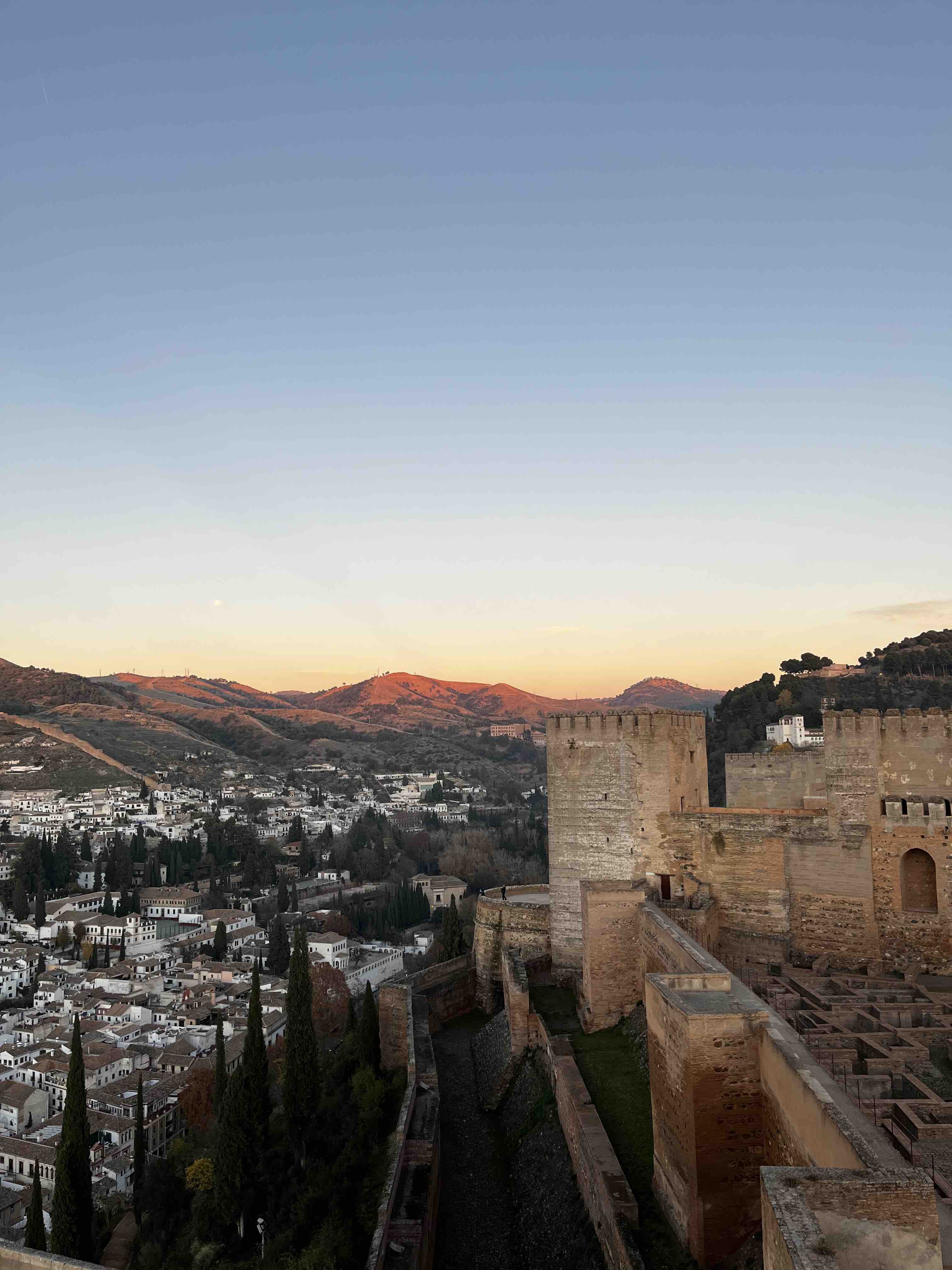
December 11
I had an early morning train from Granada to Madrid. It was mostly uneventful but the landscapes of Andalusia and Castilla-La Mancha were gorgeous. Would recommend staying up as you barrel past the morning mist.
Tips
- Book the Alhambra tickets as early as possible. These run out extremely quickly
- If you want to catch sunset of the Alhambra, try to get to San Miguel Alto church. I heard this has great views of the Alhambra and it is not as crowded as Mirador de San Nicholas
- Knowing the history of al-Andalus gives you a lot of context on why Andalusia came to be. I would also read up on the Alhambra, as the audio guide doesn’t do full justice towards the history of the complex
- Cordoba is only worth a day trip; there isn’t that much to do there
- The best time to visit this region is in the spring when the orange trees are flowering. Andalusians also take religious festivals seriously, so you will get to see some unique rituals during this time